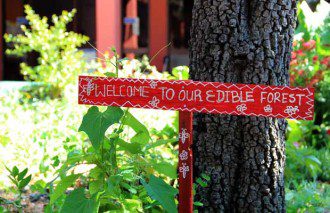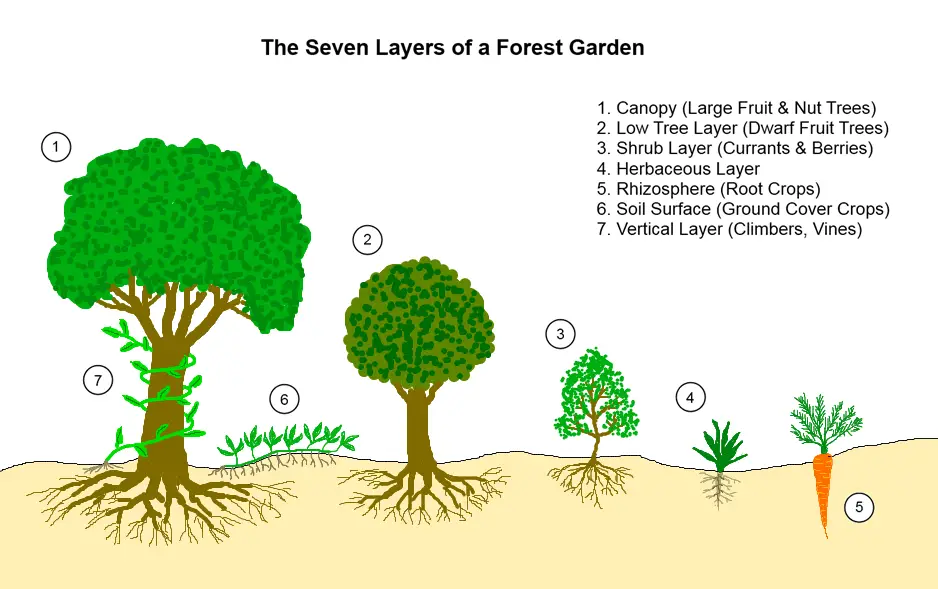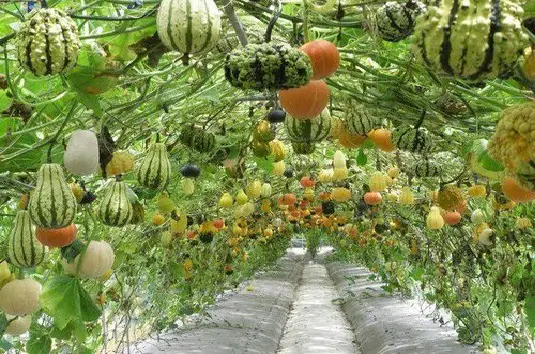Contributing writer for Wake Up World
“A man is ethical only when life, as such, is sacred to him, that of plants and animals as that of his fellow men, and when he devotes himself helpfully to all life that is in need of help.” ~ Albert Schweitzer
As a scientist, Angelo Eliades of Preston, Australia set out to prove that it isn’t necessary to have acres of land in order to grow enough food to feed a family and share with the community. He decided to use his own small yard to test his theory that growing an urban food forest in tiny spaces is not only doable, but also incredibly productive. Angelo is in good company — communities around the world are increasingly embracing the idea of sustainable public gardens. In a bid to cultivate local, organic food systems that can feed the masses in both good times and those of the more challenging sort, pockets of these community spaces are sprouting up in the most surprising of places.
“No Time or Space for Wild Speculation”
When Angelo embarked on his food forest project, he was very clear about his motivations. After witnessing too many horticulturalists who were skeptical about permaculture — a style of gardening and land management that is self-sustaining, similar to a forest in the wild — he decided to use his own backyard as an experiment to establish, once and for all, that bio-intensive gardening can be tremendously fruitful. What makes his project unique is that he used his background as a scientist to meticulously document everything he did, including all yields.
“I have no time or space for wild speculation’, he said. ‘For me, my food forest was really to prove that the concept worked. As a scientist, if something’s scientific, that means it’s repeatable,” Angelo told Food Alliance.
Tackling the “leached and lifeless” soil in his 80 square meter backyard, Angelo designed and grew an impressive bio-intensive, food producing oasis. He chose a range of fruit trees, berries, herbs, perennials and annuals to grow. And focused on a variety of early, mid- to late fruiting trees, bushes and vines so that the harvest would be extended over several months, instead of having an excess of fruit spanning just a few weeks. He also selected species that thrive in a Melbourne climate — which can be erratic at best. Even though his fruit trees are still a few years off from maturity — with one third not producing at all — the garden has already supplied 200 kilograms of produce per year. He believes 500 kilograms/year is more than possible in the future.
Why did Angelo choose a permaculture model? In short, he feels it’s the most ethical food producing system.
“There is a stark and glaring difference between the taking of life to sustain life, and the taking of life to support a lifestyle! … [F]rom a Permaculture perspective, ethical actions are simply those that support life, and unethical ones are ones that harm or destroy life needlessly.”
Angelo is just one among many who have seen the ethical implications and broad benefits of permaculture. On a broader scale, two cities, spaced a world apart, have taken the idea of public, bio-intensive edible gardens to a whole new level.
Incredible Edible Todmorden
A revolution has taken root in a small hamlet found in the north of England, one of food self-sufficiency, community and guerrilla gardening. Todmorden seems like a typical market town — until you have a closer look at the landscaping found throughout the municipality. Instead of ornamental plants, beds of vegetables, herbs and berries adorn government offices, medical centers, schools and local businesses. A barren strip on the main town road is now a herb garden, whereas a corner of the car park grows an abundance of vegetables. Even cemeteries are fair game for edible plantings. The town is now the proud home to 70 large produce beds, as well as fruit orchards and ample berry bushes. What’s more, all the bounty is free for the taking.
Pam Warhurst: How we can eat our landscapes
The founders of the movement were inspired to create food self-sufficiency for the community, while also fostering a sense of connection and beauty. Those in the forefront of the plantings didn’t ask permission — they simply did it, one small patch at a time. Todmorden even attracts “vegetable tourists” who visit the town to learn about the ever evolving project. The community hopes to be completely food self-sufficient by 2018.
Meanwhile, half a world away, a similar vision is taking shape — this time in the United States.
Community, Caring and Sharing
Imagine a public space filled with an array of fruit trees and bushes, herbs and vegetables — including chestnut and walnut; apples and pears; pineapple, guava, persimmons and yuzu citrus; honeyberries, lingonberries, raspberries and more. You would be forgiven for thinking you had stumbled into a veritable Garden of Eden. But the reality is closer to home — a seven-acre food forest in the Beacon Hill neighborhood of Seattle, Washington.
Part of the urban agriculture movement, Seattle’s Beacon Hill project is a grassroots approach to food production and security. With food costs sky-rocketing — and potential shortages looming due to erratic weather, loss of top soil and increasing population — the establishment of local, sustainable and organic community food forests is a growing trend nationwide and around the world.
Different from standard community food gardens where everyone is assigned their own private plot to tend, volunteers of a food forest cultivate the entire space together and share the fruits of their labor with everyone — even urban foragers not involved with the project.
The City of Seattle approved $100,000 towards the food forest, while the Department of Neighborhoods awarded an additional $86,317. Volunteers began preparing the garden in late 2012. Once the project was underway, the inevitable question was asked: “What to do about overzealous pickers?” Happily, the answer is inspiring: sharing can work, and does, for the young food forest — which already produces more than is gathered.
Jackie Cramer, one of the cofounders, told Grist, “I think a lot of people are drawn to it, especially young people, because it’s offering a vision — no, enacting a vision — of sharing and kindness, and caring.”
Beacon Food Forest
Article sources:
- www.foodalliance.org.au/article/permaculture-in-preston/
- www.deepgreenpermaculture.com/permaculture/
- www.wakeup-world.com/2014/05/05/enterprising-community-aims-for-total-food-self-sufficiency-with-free-edible-landscapes/
- www.permaculturenews.org/2009/01/26/food-forests-across-america/
- www.grist.org/food/these-urban-farmers-want-to-feed-the-whole-neighborhood-for-free/
- www.takepart.com/article/2012/02/21/its-not-fairytale-seattle-build-nations-first-food-forest
- www.theglobeandmail.com/news/british-columbia/food-forest-takes-shape-in-seattle/article12758243/
- www.onecommunityglobal.org/food-forest/
- www.resilience.org/stories/2014-08-01/20-urban-food-forests-from-around-the-world
Recommended articles by Carolanne Wright:
- Considering the Flu Shot? Here are Five Reasons to Think Twice
- Plastic-Eating Mushroom Discovered in the Amazon Rainforest — A Solution for Our Trash Saturated World?
- Chronic Lyme Disease: A Modern Plague the Government Chooses to Ignore
- Big Pharma and Organized Crime — They are More Similar Than You May Think
- Over 100 Scientific Studies Agree: Cannabis Annihilates Cancer
- Emotional Energetic Healing: The Future of Medicine is Here
- Why Every Parent Should Consider Unschooling
- The Greenhouse of the Future: Grow Your Own Food Year-Round With This Revolutionary System
- First U.S. City Produces More Electricity Than It Uses — With 100% Renewable Technology
- Autistic Boy with Higher IQ Than Einstein Discovers Gift After Removal from State-Run Therapy
About the author:
I’m Carolanne — a writer, chef, traveler and enthusiastic advocate for sustainability, organics and joyful living. It’s good to have you here. If you would like to learn more, connect with me at Thrive-Living.net or visit Twitter.com/Thrive_Living.
If you've ever found value in our articles, we'd greatly appreciate your support by purchasing Mindful Meditation Techniques for Kids - A Practical Guide for Adults to Empower Kids with the Gift of Inner Peace and Resilience for Life.
In the spirit of mindfulness, we encourage you to choose the paperback version. Delve into its pages away from screen glare and notifications, allowing yourself to fully immerse in the transformative practices within. The physical book enriches the learning process and serves as a tangible commitment to mindfulness, easily shared among family and friends.
Over the past few years, Wake Up World has faced significant online censorship, impacting our financial ability to stay online. Instead of soliciting donations, we're exploring win-win solutions with our readers to remain financially viable. Moving into book publishing, we hope to secure ongoing funds to continue our mission. With over 8,500 articles published in the past 13 years, we are committed to keeping our content free and accessible to everyone, without resorting to a paywall.










